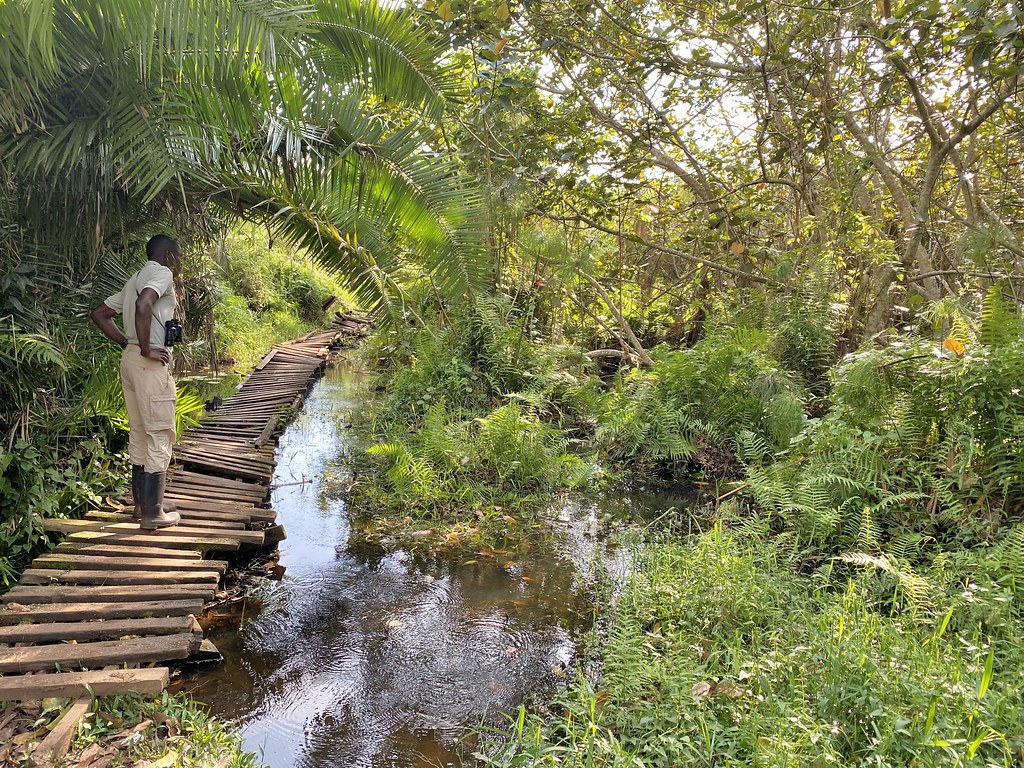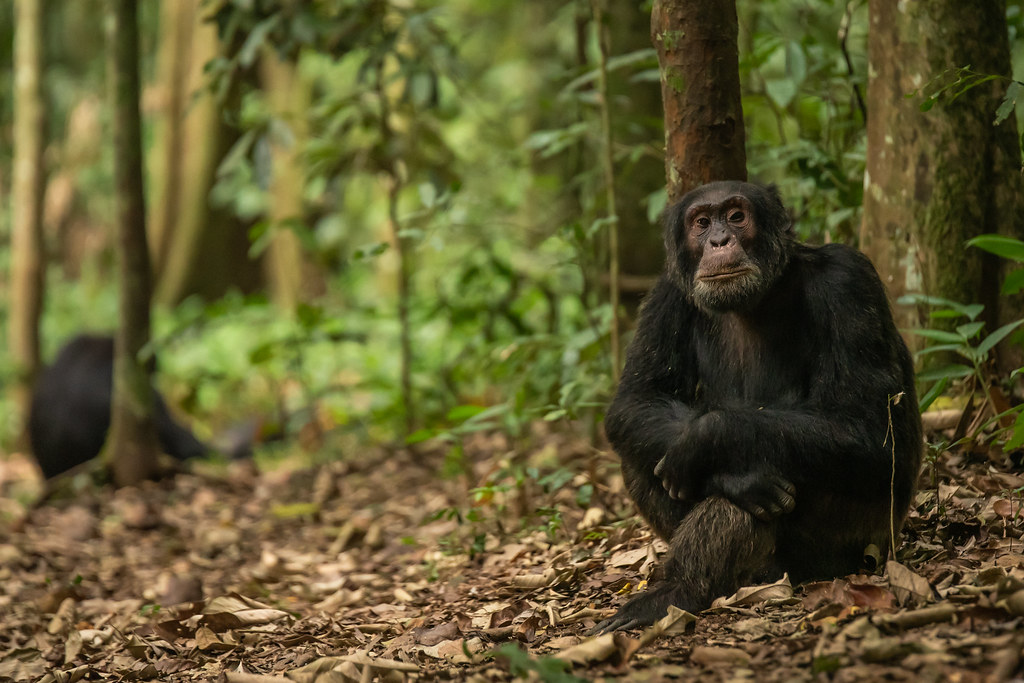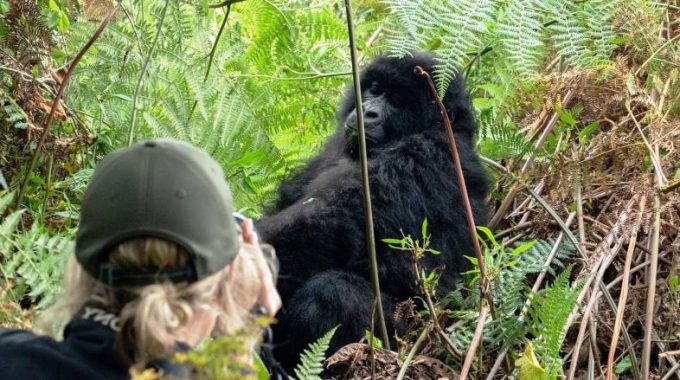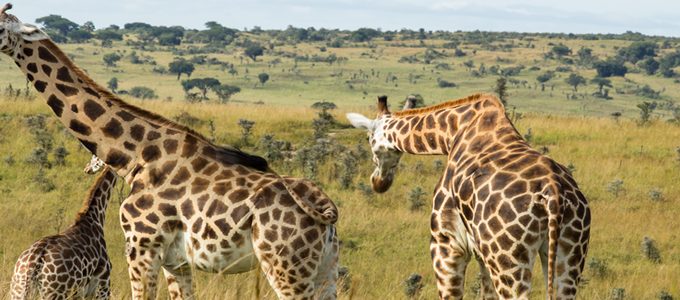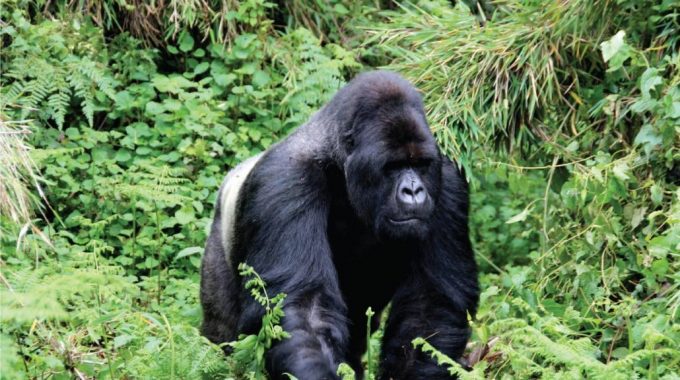Budget Gorilla trekking Deals in Uganda, Budget Gorilla Safaris in Uganda, Affordable gorilla trekking tours…
2024 – 2027 Kibale Forest National Park: A Gem in the wild
Kibale Forest National Park: A Gem in the wild
Kibale Forest National Park, often referred to as the “Primate Capital of the World,” is a verdant wonderland located in western Uganda. This 795 square kilometer (307 square mile) park is a treasure trove of biodiversity, featuring one of the most significant tracts of tropical rainforest in East Africa. Established as a national park in 1993, Kibale’s rich ecosystem is not only a haven for primates but also a sanctuary for a plethora of other wildlife species, making it a must-visit destination for nature enthusiasts and adventure seekers alike. In this context, we will delve into the attractions, activities, and best times to visit Kibale Forest National Park, painting a comprehensive picture of this extraordinary natural reserve.
Attractions in kibale forest National Park
Kibale forest more much more than chimpanzees, the park is a home to several other primate species mounting to 13 species of primates thus famously referred to as the primate capital in the world. The park too is haven for bird species sighted here. Kibale forest National Park attractions include;
1. Primate Population
Kibale Forest National Park is renowned for its diverse primate population. It boasts 13 species of primates, the highest number in East Africa, with a particularly high density of chimpanzees. The park is home to approximately 1,500 chimpanzees, making it one of the best places in the world to observe these fascinating creatures in their natural habitat. Alongside chimpanzees, visitors can encounter red colobus monkeys, black-and-white colobus monkeys, red-tailed monkeys, blue monkeys, and the rare L’Hoest’s monkey. The chance to observe these primates up close is a major draw for visitors from around the globe.
2. Birdlife
Birdwatchers flock to Kibale for its exceptional avian diversity. The park is home to over 375 bird species, including the African grey parrot, the green-breasted pitta, the African pitta, and the endemic Kibale ground thrush. The Bigodi Wetlands Sanctuary, located adjacent to the park, is a birdwatcher’s paradise, offering sightings of species like the great blue turaco and the papyrus gonolek. The rich birdlife adds an extra layer of allure to the park’s already impressive natural offerings.
3. Flora
The park’s flora is equally captivating, with its mix of lowland tropical rainforest, interspersed with patches of grassland and swamp. Towering trees, some reaching heights of over 55 meters (180 feet), dominate the landscape. These include species like the mahogany, fig trees, and ironwood. The lush vegetation provides the perfect backdrop for the park’s wildlife and offers an immersive experience in one of the world’s most beautiful rainforests.
4. Other Wildlife
Beyond primates and birds, Kibale Forest National Park hosts a variety of other wildlife. Forest elephants, bush pigs, giant forest hogs, and several species of antelope can be found within its boundaries. The park also shelters a variety of smaller mammals, reptiles, and amphibians, contributing to its overall biodiversity.
Activities
The park offers several activities which has attracted several visitors coming from different parts of the world to explore this Gem in the wild. Including;
1. Chimpanzee Tracking
Chimpanzee tracking is the park’s star attraction. This exhilarating activity involves hiking through the dense forest in search of habituated chimpanzee families. The experience allows visitors to observe these intelligent creatures as they go about their daily routines—feeding, grooming, and interacting with each other. Guided by experienced trackers, visitors learn about chimpanzee behavior and the efforts being made to conserve these magnificent animals. The excitement of hearing chimpanzee calls echo through the forest before catching sight of them is an unforgettable experience.
2. Chimpanzee Habituation Experience
For those looking for a more immersive experience, the Chimpanzee Habituation Experience offers a unique opportunity to spend an entire day with chimpanzees. This program allows visitors to accompany researchers and habituators as they follow chimpanzees from early morning until late afternoon, witnessing their behaviors and interactions in great detail. It provides a deeper understanding of chimpanzee social structures and conservation challenges.
3. Bird Watching
With its rich avian diversity, Kibale is a birdwatcher’s dream. Guided bird-watching tours take visitors through various habitats, including the forest, grasslands, and wetlands. The Bigodi Wetlands Sanctuary, in particular, is a prime spot for bird watching, where visitors can spot elusive species and enjoy the tranquility of the wetlands.
4. Nature Walks and Hikes
The park offers numerous trails for nature walks and hikes, catering to different levels of fitness and interest. These walks provide opportunities to explore the park’s diverse ecosystems, from dense forests to open grasslands and swamps. Along the way, guides share insights into the park’s flora and fauna, enhancing the experience with their knowledge and expertise.
5. Nocturnal Forest Walks
For a different perspective on the forest, nocturnal walks are available. These guided walks allow visitors to experience the park’s nocturnal life, with chances to see creatures like bush babies, nightjar birds, and various insects that become active after dark. The sounds and sights of the forest at night offer a unique and thrilling adventure.
6. Community and Cultural Visits
The area surrounding Kibale Forest National Park is inhabited by several indigenous communities, including the Batooro and Bakiga people. Visitors can engage in cultural tours that include visits to local villages, traditional dances, and opportunities to learn about the customs and lifestyles of these communities. The Bigodi Wetlands Sanctuary, managed by the local community, offers a blend of wildlife and cultural experiences, with proceeds supporting local development projects.
Best Time to Visit
Kibale Forest National Park can be visited year-round, but the best times to visit depend on the activities you wish to pursue and your weather preferences.
Dry Seasons: December to February and June to September
The dry seasons are generally considered the best times to visit Kibale Forest National Park. During these periods, the weather is more predictable, with lower chances of heavy rainfall. The trails are drier and easier to navigate, making activities like chimpanzee tracking and nature walks more enjoyable. The dry seasons also coincide with the peak bird-watching periods, as many bird species are more active and visible. Additionally, the dry conditions are favorable for viewing other wildlife, as animals tend to congregate around water sources, making sightings more frequent.
Wet Seasons: March to May and October to November
The wet seasons bring heavy rainfall, which can make trails muddy and challenging to traverse. However, these periods have their own unique advantages. The forest is at its most lush and vibrant during the wet seasons, offering stunning scenery and excellent opportunities for photography. The rains also trigger fruiting in many trees, attracting primates and other wildlife to feed, which can lead to interesting sightings. Birdwatchers might also find the wet seasons rewarding, as migratory birds join the resident species, increasing the diversity of avian life.
Conservation and Research
Kibale Forest National Park plays a crucial role in conservation and research. The park is a focal point for primate research, with several long-term studies conducted by international and local scientists. Research efforts focus on understanding primate behavior, ecology, and the impact of human activities on wildlife. The data collected is vital for developing effective conservation strategies and ensuring the long-term survival of the park’s biodiversity.
Conservation initiatives in Kibale also involve community engagement and education. Local communities are encouraged to participate in conservation efforts through eco-tourism projects, which provide alternative livelihoods and reduce dependence on forest resources. Programs aimed at raising awareness about the importance of wildlife conservation are conducted in local schools and villages, fostering a sense of stewardship among the younger generation.
Challenges
Despite its rich biodiversity and conservation efforts, Kibale Forest National Park faces several challenges. Habitat destruction, primarily due to agricultural expansion and illegal logging, poses a significant threat to the park’s ecosystems. Human-wildlife conflict is another pressing issue, as communities living near the park sometimes come into conflict with animals, particularly when crops are damaged by foraging wildlife.
Efforts to mitigate these challenges include stricter enforcement of park boundaries, community-based conservation programs, and initiatives to promote sustainable agriculture practices. The involvement of local communities in conservation activities is crucial for the park’s long-term sustainability.
Visitor Information and Accommodations
Kibale Forest National Park offers a range of accommodation options to suit different preferences and budgets. From luxury lodges to budget-friendly campsites, visitors can find suitable lodging within or near the park. Some notable options include:
Primate Lodge Kibale: Located near the park’s Kanyanchu Visitor Center, this lodge offers comfortable accommodation with options ranging from luxury cottages to budget rooms. It is an ideal base for chimpanzee tracking and other activities.
Ndali Lodge: Situated on a tea plantation with stunning views of the Rwenzori Mountains and the Crater Lakes, Ndali Lodge provides a serene and luxurious retreat. It is a short drive from the park and offers guided tours and nature walks.
Kibale Forest Camp: This mid-range camp offers tented accommodation and cottages set in a beautiful forested area. It provides a rustic yet comfortable experience, with easy access to the park’s attractions.
Isunga Lodge: A budget-friendly option with breathtaking views of the surrounding landscapes. Isunga Lodge offers simple, comfortable accommodation and is well-situated for exploring the park and its environs.
Conclusion
Kibale Forest National Park is a jewel in Uganda’s natural heritage, offering a unique blend of biodiversity, adventure, and cultural experiences. Its rich primate population, diverse birdlife, and lush vegetation make it a prime destination for wildlife enthusiasts and nature lovers.
The park’s commitment to conservation and sustainable tourism ensures that its natural treasures will be preserved for future generations to enjoy. Whether you are tracking chimpanzees, exploring the forest on a nature walk, or immersing yourself in the local culture, Kibale Forest National Park promises an unforgettable and enriching experience. For those seeking to connect with nature and witness the wonders


